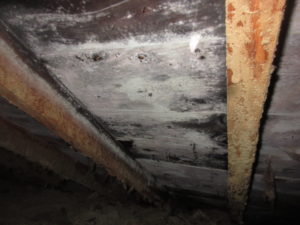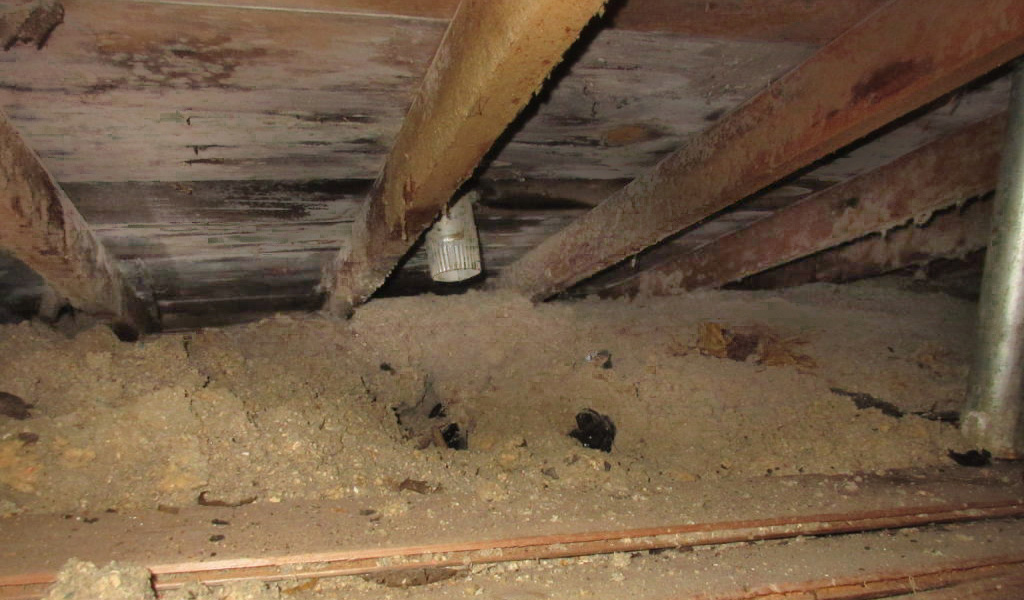What’s in your attic? The reality is, a lot of home owners have no idea. From a home inspector’s point of view, the attic is one of the most important parts of the inspection. It’s an area where some of the most significant problems are found. Sometimes these problems have gone undetected for years.
On one of my recent Minneapolis inspections, a quick pop of the attic hatch revealed a problem that is all too common in homes: missing vent connections. The bathroom exhaust fans were leaking air from the home’s interior into the unconditioned attic space. Check out the video below that shows what I found.
While it’s never a good idea to vent into an attic, either directly or indirectly, the problem is compounded in colder climate zones. Allowing warm/damp air from bathroom fans, kitchen exhausts and clothes dryers to escape into an attic leads to condensation in the attic space. In winter time, major frost build up and ice dams are often the result. Stained walls and ceilings, damp insulation, mold, and structural damage are all possible outcomes.
Note the staining and likely mold growth on the underside of the roof decking from this same inspection. The homeowner or buyer is likely going to need to invest in mold remediation and possible replacement of roof decking. Both are costly.

Mold in attic
If you want to avoid problems like this in your home, all attic vent connections need to be in place and secured and sealed. Any exhaust that runs through unconditioned attic space should be insulated. This prevents both condensation from forming in the duct and heat loss into the attic.
And finally, there needs to be a positive connection to a proper exhaust boot, either at the wall or roof. I often see exhaust ducts in the attic that are simply pointed toward a roof or gable vent. While this may allow much of the exhaust air to vent to the outside, a lot of that hot, moisture laden air is still going to remain in the attic. That’s never going to be a good scenario.
So, what’s in your attic? Pop that hatch or access panel and have a look. Any staining of the roof decking around a vent connection indicates leaking air. You’ll want to correct that. If your exhaust ducts aren’t insulated, have an insulation sleeve installed or replace them with a new insulated duct.
And a final word, if you are certain that you have fans or exhausts that vent up and out but can’t find them in the attic, dig around a little bit. Turn on the fan and follow the noise. Finding fan units completely buried in attic insulation with no exhaust duct at all is more common than you would think.

Leave a Reply